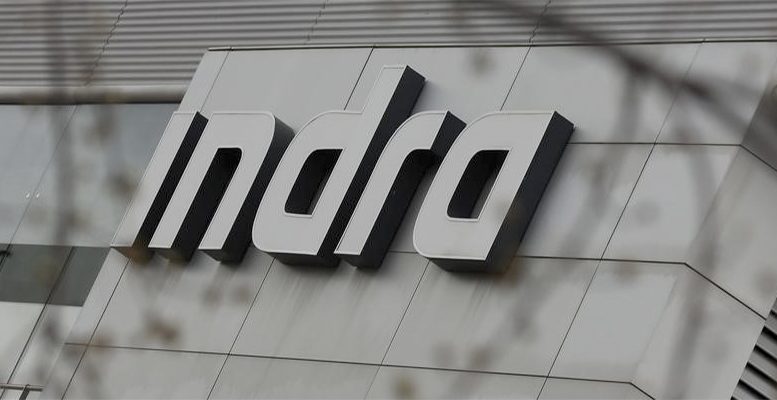Sopra Steria and Indra Sistemas are small market caps (respectively €2.2bn and €1.7bn) compared to their peers Atos (Add, France) and Capgemini (Buy, France) with market caps of €10.0bn and more. As reported by Carax- Alphavalue’s experts Ytd Sopra Steria’s and Indra Sistemas’ share prices have been resilient (respectively +0.5% and -0.6%) compared to the clear negative trend for Capgemini (-6%) & Co which relates to the uncertain outcome of US protectionism vs. the large Indian production centres.
Sopra Steria and Indra Sistemas trade at reasonable 2017 P/Es (respectively 13.4x and 13.6x) and analysts see significant upsides for both stocks. Indra is clearly more of a high risk- high return proposition while Sopra may have to cope with Brexit-induced uncertainties
Sopra Steria vs Indra Sistemas share price
Of note: the EBIT margin differs from the operating margin on business activity which is the metric on which Sopra Steria communicates. EBIT is after expenses related to stock options, the amortisation of allocated intangible assets, restructuring/integration/acquisition and other costs.
Restructuring on and on
According to Carax- Alphavalue, the reasons for restructurings and the extent of the task differ.
On the one hand, the merger of Sopra and Steria at year-end 2014 led to a business reorganisation (I2S France, C&SI Germany), to a relaunch of growth in the UK private sector, to chasing cost synergies (€62m targeted in 2017) and to raising profitability in other European countries. Analysts explian:
The group is on-track with “operating margin on business activity” estimated at 8% of revenue in 2018 vs 6.9% of revenues in 2015.
Indra Sistemas collapsed in 2014 consecutively to the lack of growth in Spain, contract overruns and the delivery of various unprofitable projects.
Management took drastic measures, primarily a redundancy plan in Spain and Latin America, with a target of cost savings of €180-200m by the end of 2018. Progress is visible with savings of €90m, then €120m expected in 2016 and 2017 respectively. The 2018 EBIT margin is seen at 9.5% (vs -5.3% of revenue in 2015).
Too geared for more external growth
Indra Sistemas is not in a position to fund acquisitions. The short-term priority is to reduce net debt estimated at €617m (1.7x shareholders’ equity) at year-end 2016. Although the financial situation is not critical at Sopra Steria, net debt estimated at €554m (47% of the shareholders’ equity) at year-end 2016 is not negligible and limits external growth to the “selective” variety. Already in 2015 and 2016, Sopra Steria was focused on the purchase of small companies with specific expertise.
Brexit, the US and Indian offshore for main concerns
European IT services stocks tanked severely just after the Brexit vote. The negative impact expected on revenues and order intake did not occur in Q3 16 and would not by Q4 16. Nevertheless, 2017 is not immune to investment deferrals, in particular in financial services. Carax- Alphavalue point:
Sopra Steria looks more vulnerable (26% of revenue in the UK) than Indra Sistemas (an estimated 2% of revenue in the UK) even if it is tempered by the nature of the business (68% of revenue in the public sector based on long-term contracts, of which two-thirds relate to the JVs NHS SBS and SSCL).
They conclude:
In the US, the business model of all IT services companies is based on large production centres in India. The election of Trump and his ‘US first’ stance raise questions about Indian offshoring. “The positive side though is that the expansion of the cloud computing and the digital offerings create jobs onshore. Sopra Steria and Indra Sistemas are not on the front line, however, with essentially no exposure to the US IT services market.”
Spanish value creation
Indra Sistemas is the best for value creation in 2016-17 … following its value destruction in 2014-15. Conversely, Sopra Steria ROCE is handicapped by the merger of Sopra and Steria which generated considerable goodwill (>€1.0bn) and amortised intangible assets.
The difference in ROEs between Indra Sistemas and Sopra Steria (respectively 25% and 12% estimated in 2016) reflects, in particular, capex limitation and considerable net debt at Indra Sistemas which is not sustainable in the medium term. Indra Sistemas is not yet in top-line growth mode.
Finally, analysts forecast strong upside for both stocks.
Although our estimates are below the companies’ targets (including a negative Brexit effect for Sopra Steria in 2017), we see a significant upside for both stocks – the highest for Indra Sistemas – but a lower execution risk for Sopra Steria than for Indra Sistemas which is largely involved in Latin America where the short-term outlook is volatile, to say the least.
Sopra’s safer operating ground is made clear by the fact that it has had no downgrade of late on sales expectations even if its EBIT margin is more likely to hit 8% than 9%. By contrast, the Indra 2018 ambition at 10-11% looks high. But then there is no Brexit risk.





